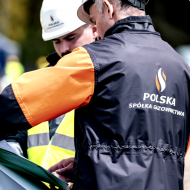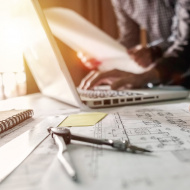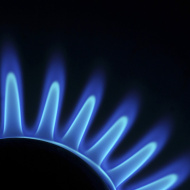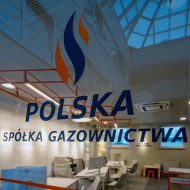Q&A
Read the answers to the most frequently asked questions.

System communication
The XML files are published when the readout is registered in the system. The CSV file is generated once a day (7:00 p.m.).
The contact information of the representative sending the message are optional and may be sent to uniquely identify a contact person. During the communication tests, it will be possible to verify the use of this box.
The NAD2 designation in XML refers to the POD location. It remains unchanged in the Excel description.
In messages for WS, which predominate due to the number of messages:
PLACE_QUALIFIER
PLACE_ID
CODE_LIST_RESPONSIBLE_AGENCY_1 (different sequence).
For WR, the PLACE box is used, though eventually it will be changed to PLACE_ID.
PLACE_QUALIFIER
PLACE_ID
CODE_LIST_RESPONSIBLE_AGENCY_1 (different sequence).
For WR, the PLACE box is used, though eventually it will be changed to PLACE_ID.
Items not mapped in an Excel file will not be used in the current version, but they could be used in the future.
The launch of subsequent tariff areas (Branches), preceded by migration and granting new ID numbers (POD) to the WS-type outputs, will be communicated to all DSCs in advance.
The file name consists of:
a) A fixed value: “EDI_”
b) the 4-character partner code
c) the prefix of the POD number
d) the values from the MSCONS\DTM\DATUM item contained in the XML file
e) the values of the MSCONS\BGM\DOCUMENTNUMBER object
a) A fixed value: “EDI_”
b) the 4-character partner code
c) the prefix of the POD number
d) the values from the MSCONS\DTM\DATUM item contained in the XML file
e) the values of the MSCONS\BGM\DOCUMENTNUMBER object
In this case, we kindly inform you that data conversion resulted in the removal of the first two zeros for the Tarnów area. There was no renumbering. Also be bear in mind that the current path to the SFTP server is final.
This message is not related to the installation of the gas meter, and the COS_SMV_MMR identifiers show that the initial status of the gas meter was read by PSG from the gas meter when switching suppliers or starting deliveries without prior disassembly of the gas meter.
The tariff group may be indicated in the MSCONS message.
When installing a gas meter (not applicable to gas meter replacement), the identifiers in the MSCONS message would describe the nature of the readout as follows: IOM_SMV_MMR.
In the event of a failure of EDIFACT, the PZD service will have an alternate communication method with the DSC. This particularly applies to messages related to the transfer of readout data (MSCONS message). In the case of the e-BOK service, this system will serve some of the tariff areas served by PSG until the systems are fully consolidated by PSG.
PSG sp. z o.o. allows the exchange of messages with the DSC alternatively, using the protocols AS4 and SSL (TLS 1.2).
The user can download historical measurement data for a period of 3 months.
Since the implementation of the central customer billing system, PSG has been carrying out activities aimed at improving the quality and availability of operational data. System performance has been improved and the frequency of data presentation has been increased. Currently, the data is available approximately 4 hours back. Information provided by users about errors or problems with the eBOK portal is analyzed and corrective actions are implemented as a result.
Other ways of sharing data are also analyzed, depending on the technical capabilities of the IT systems used in PSG and the development plans of these systems.
Other ways of sharing data are also analyzed, depending on the technical capabilities of the IT systems used in PSG and the development plans of these systems.
The data are collected from the same source, and therefore should be identical to those obtained using other methods.
- For WS consumers, the conversion factor relates to the billing period specified in the message. The billing period is specified in the message with the start date and end date.
- For customers from the WR group, despite assigning the conversion factor to a specific hour, it should be assumed that it refers to the entire billing period.
The discrepancy between the PoD of the collection point and the PoD of the billing line results from the system solution adopted by PSG. In the case of multi-line systems or sites with short-term contracts, PSG creates a PoD for the purposes of servicing such points, under which billings are made. Operational data are available from the level of individual lines; therefore, in eBOK they are presented next to the PoD of the collection point, and the PoD of individual measurement lines.
SFTP server
The files will be archived in accordance with the rules described in the document entitled “SFTP User Manual for WS-Type Output Reading Data.”
Measurement data on the SFTP server is made available for all PSG tariff areas. Measurement data for the Poznań and Warsaw tariff areas are available in the current formats in the POZNAN and WARSAW folders, respectively. Measurement data for other tariff areas are available in the OUTPUT->CSV-WS folder in the form of CSV and OUTPUT->MSCONSWS in the form of MSCONS files, in accordance with the EDIFACT standard specification and they relate to WS-type output points. In the OUTPUT->MSCONSWR folder there are measurement data from the WR-type output points in the form of MSCONS files.
Be advised that data is available on the SFTP server for all WS-type outputs. I would like to mention that for the Poznań and Warsaw tariff areas, data are made available in the current formats on local FTP servers and data for other tariff areas are in a uniform format in MSCONS (XML) files and CSV files.
In this case, I kindly inform you that the message sent to you concerns WS points only.
Please be advised that empty files without measurement and billing data result from the lack of readouts during this period. CSV files are placed on the SFTP server once a day and contain the readings entered into the system by 7:00 p.m. on a given working day. Empty files mean that on a given day, readouts for the dedicated DSC were not implemented on the SFTP (no reading of the measurement system indications was made on that day).
Please be advised that the files with measurement data for the Zabrze tariff area are currently in the OUTPUT->MSCONSWS directory (XML files) and the OUTPUT->CSV-WS directory (MSCONS files converted to CSV).
On May 31, 2019, Polska Spółka Gazownictwa sp. z o.o. published an update of the EDIFACT standard; the updated version of the standard is available at www.psgaz.pl/edi.
The publishing of measurement and readout data for WR points will be communicated to all DSCs in advance.
On May 31, 2019, Polska Spółka Gazownictwa sp. z o.o. published an update of the EDIFACT standard; the updated version of the standard is available at www.psgaz.pl/edi.
The publishing of measurement and readout data for WR points will be communicated to all DSCs in advance.
We kindly inform you that you should follow the attached Instructions. The generated public key should be sent to [email protected]; the person who sends the file should be listed in Annex 4 or 5 of the Distribution Agreement. The username given by PSG will be sent in the feedback after verification of the reporting person by PSG’s IT services.
Please be advised that measurements accurate to the hour are made available for WR points, while in the measurement and readout files for WS points the read date is defined in the dd.mm.yyyy format. Data conversion resulted in the removal of the first two zeros from the Tarnów area. There was no renumbering.
Readings
The XML message has a tree structure. The dates indicated by the user are on level 3 of the XML tree in segment SG6 and they represent the maximum period for the location of the meter (the maximum period for all data transferred in the message). The period is presented as parameters 163 (start time) plus date and 164 (end time) plus date in the sense that “the data reported in the message below may range from 201803310600+2 to 201805010600+02.”
The exact periods for the reported measurement data can be found in other segments of the message. The measurement data is always followed by the measurement unit and the dates from and to.
Microsoft Excel is not ideal for XML analysis, as it does not show the message’s structure. It is more visible in Internet Explorer.
The exact periods for the reported measurement data can be found in other segments of the message. The measurement data is always followed by the measurement unit and the dates from and to.
Microsoft Excel is not ideal for XML analysis, as it does not show the message’s structure. It is more visible in Internet Explorer.
Yes, access to operational data may be requested by customers from the WR tariff groups. End-users may request access to operational measurement data on the basis of the “Regulations for Remote Sharing of Measurement Data,” available on the PSG website.
Ultimately, this data will be made available only on SFTP or transferred in the form of an MSCONS message between the systems of PSG and the DSC.
Due to the large number of data sources (thousands of measuring devices) in everyday use, we are not able to guarantee 100% availability of data (failure-free operation). We have taken steps to develop a procedure that allows us to send the expected information to the DSC.
Change of fuel gas supplier
Yes, the files will be published in the supplier change event handler.
Yes, the CSV generator will check the data in the CSV files based on the files.
The names will follow the names in the MSCONSWS folder.
An amendment was introduced in subsequent messages after July 2, 2019, which is also followed by the above data in the content of messages.
We are still working on aligning the structure of messages from the Tarnów area towards that of messages from the Zabrze and Gdańsk areas.
We are still working on aligning the structure of messages from the Tarnów area towards that of messages from the Zabrze and Gdańsk areas.
Tariffs
Consumers classified in the 4th Tariff Group will not be qualified as WR.
Consumption estimation
No such comparison results were observed in the period of study, 2017. Simulation of the settlement of the distribution service of WS points for the Zabrze tariff area carried out by PSG throughout 2017 (1.3 million recipients) showed an improvement in the accuracy of estimation due to a reduced annual balance difference of 0.5%. The balance difference – losses or surpluses – in individual monthly periods of 2017 were also reduced compared to the current temperature method.
As for the loss, the changes are on the order of 1%–5% in the winter period; in the case of surpluses occurring during the summer period, the changes are from 0.5%–10%. As a result, when using the SLP method, the volume of gas settled as part of the commercial balancing of the distribution system between the DSC and PSG should decrease in individual months, and the balance of these settlements (gas transmitted minus gas received) should decrease throughout the year.
The estimation method based on SLP profiles is based to a greater extent on actual daily temperature values; the estimation also takes into account the impact of weekdays and non-working days. As a result, the SLP estimation method better reflects the recipient’s actual consumption.
As for the loss, the changes are on the order of 1%–5% in the winter period; in the case of surpluses occurring during the summer period, the changes are from 0.5%–10%. As a result, when using the SLP method, the volume of gas settled as part of the commercial balancing of the distribution system between the DSC and PSG should decrease in individual months, and the balance of these settlements (gas transmitted minus gas received) should decrease throughout the year.
The estimation method based on SLP profiles is based to a greater extent on actual daily temperature values; the estimation also takes into account the impact of weekdays and non-working days. As a result, the SLP estimation method better reflects the recipient’s actual consumption.
Tenders
All tender procedures for Polska Spółka Gazownictwa sp. z o.o., based in Tarnów, are announced and conducted through the PSG Purchasing Platform. All information on the ongoing proceedings is available at https://zamowienia.psgaz.pl.
Questions and concerns regarding the implementation of the purchasing process should be sent to [email protected].
Invoices
You can get information on the current status of payment of documents (invoices or decisions) if you call the following telephone number on working days between 7:00 a.m. and 3:00 p.m.: 22 363 71 00.
Polska Spółka Gazownictwa declares that all bank accounts held by the company and used for payments from contractors have been registered with the electronic “List of entities registered as VAT taxpayers, unregistered, and deleted and restored to the VAT register” which is available on the website of the Ministry of Finance, known as the “white list.”
The company states that the invoice may indicate a bank account which does not appear on this list. As part of the primary settlement accounts that are subject to reporting, the company uses so-called virtual accounts assigned only to one contractor of the company. These accounts are not subject to the reporting obligation and are therefore not shown on the white list. Payments to virtual accounts are treated as payments to the settlement account disclosed on the list of VAT taxpayers.
If the invoice includes a virtual account, the following message will be displayed after verification on the website of the Ministry of Finance: “The account number searched for is consistent with the template used and matches one of the accounts displayed on the list.” This means that the account is recognized as registered with the white list that and the payment to this account complies with the provisions of the Value Added Tax Act and does not require reporting in this regard to the tax authorities.
The above information is an explanation of this white list of bank accounts used by PSG and does not constitute tax advice within the meaning of Article 2 Item 1 point 1 of the Tax Advisory Act.
The company states that the invoice may indicate a bank account which does not appear on this list. As part of the primary settlement accounts that are subject to reporting, the company uses so-called virtual accounts assigned only to one contractor of the company. These accounts are not subject to the reporting obligation and are therefore not shown on the white list. Payments to virtual accounts are treated as payments to the settlement account disclosed on the list of VAT taxpayers.
If the invoice includes a virtual account, the following message will be displayed after verification on the website of the Ministry of Finance: “The account number searched for is consistent with the template used and matches one of the accounts displayed on the list.” This means that the account is recognized as registered with the white list that and the payment to this account complies with the provisions of the Value Added Tax Act and does not require reporting in this regard to the tax authorities.
The above information is an explanation of this white list of bank accounts used by PSG and does not constitute tax advice within the meaning of Article 2 Item 1 point 1 of the Tax Advisory Act.
Information on the activities of the PSG
PSG is a guarantee of reliable and safe transport of fuel through the national gas distribution network. We manage the network traffic, expand, maintain and repair gas networks and equipment, evaluate the
quality and quantity of transported gas.
quality and quantity of transported gas.
Polska Spółka Gazownictwa is the National Operator of the Gas Distribution System in Poland and
European leader of the gas distribution industry. Gas fuel is distributed on the basis of contracts concluded with companies that sell it. Prior to being received by the final customer, gas follows a route that consists of several stages: exploration, extraction, storage, transmission, distribution, sales. Together, they make up the gas fuel supply chain.
European leader of the gas distribution industry. Gas fuel is distributed on the basis of contracts concluded with companies that sell it. Prior to being received by the final customer, gas follows a route that consists of several stages: exploration, extraction, storage, transmission, distribution, sales. Together, they make up the gas fuel supply chain.
Pursuant to the Energy Law, the Distribution Service Provider’s Tariff is subject to approval by the President of the Energy Regulatory Office. Once they are published in the ERO Bulletin, the approved tariffs take effect after at least 14 days has passed.
Safety of natural gas usage
No, you can’t. Natural gas is completely non-toxic to humans. When used as a fuel gas, a fragrance compound called tetrahydrothiophene (THT) is added to it for safety reasons, giving it a distinct, unpleasant odor. This is done to facilitate the detection of any leaks. It is this repulsive, strong smell that often causes us to wrongly consider the gas poisonous.
This is due to the addition of a fragrance compound called tetrahydrothiophene (THT) in the “odorizing” process, which gives it its characteristic smell. The purpose of this process is to help detect any gas leaks.
If you smell a gas leak in a closed room, you should:
In a closed room, you must not:
Natural gas can also escape into open spaces from gas network components. It is usually accompanied by a characteristic smell, the noise of gas leaking, local drying of the soil, and discoloration of the vegetation. If you notice such indications, notify the Gas Emergency Service (dial 992) and keep away from the gas leak.
- Open all windows as soon as possible.
- Close the valve at the gas meter and gas appliances.
- Leave the building immediately.
- Notify the Gas Emergency Service (dial 992) or the Fire Brigade (dial 998 or 112 on mobile phones) and the neighbors.
In a closed room, you must not:
- Use open fire.
- Turn lights and other electrical devices on or off (they may produce sparks).
- Use a landline or a mobile phone (call the gas emergency service or the fire department from outside the building).
Natural gas can also escape into open spaces from gas network components. It is usually accompanied by a characteristic smell, the noise of gas leaking, local drying of the soil, and discoloration of the vegetation. If you notice such indications, notify the Gas Emergency Service (dial 992) and keep away from the gas leak.
Carbon monoxide, also known as CO, is formed as a result of incomplete natural gas combustion, e.g., from faulty flue pipes or inadequate ventilation in the room. It is very toxic—it may lead to serious poisoning and even death.
Proper ventilation of the room is extremely important! In order to burn properly, natural gas requires a sufficient amount of oxygen from the air. If the room where the central heating boiler is located has faulty or insufficient ventilation, a lack of oxygen will result in incorrect gas combustion. This can result in poisonous carbon monoxide (fumes). In the event of faulty ventilation, carbon monoxide accumulates in the room and may cause poisoning or death.
Yes, illegal gas installations are often leaky and unsafe. If you notice an illegal gas installation, report it as soon as possible! Illegal gas consumption may result in fire or explosion. If you are aware of such activities, call the Gas Emergency Service (dial 992).
Customer service
Our facilities directly serving the customers are open and operating under a strict sanitation regime. Use the search engine for detailed information.
Call our helpline - 22 444 33 33. Our consultants will answer any questions you may have about (connecting to the gas network, gas supply, readings or tasks carried out by our staff or making a complaint).
Anyone aware of illegal fuel gas collection can notify PSG. We ensure anonymity and guarantee immediate and effective action to eliminate reported cases of illegal gas consumption.
Out of concern for the safety of its customers, Polska Spółka Gazownictwa sp. z o.o. has launched:
Out of concern for the safety of its customers, Polska Spółka Gazownictwa sp. z o.o. has launched:
- a 24/7 toll-free hotline: 800 880 555
- email: [email protected]
- web form (below)
- by post to the following address: PSG sp. z o.o., ul. Krucza 6/14, 00-537 Warsaw.











